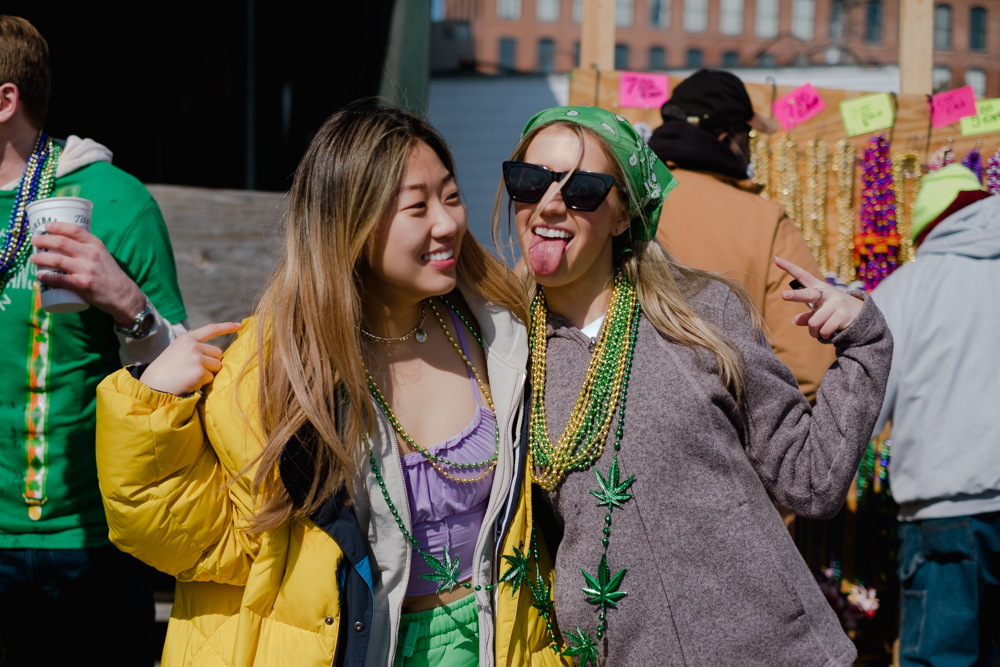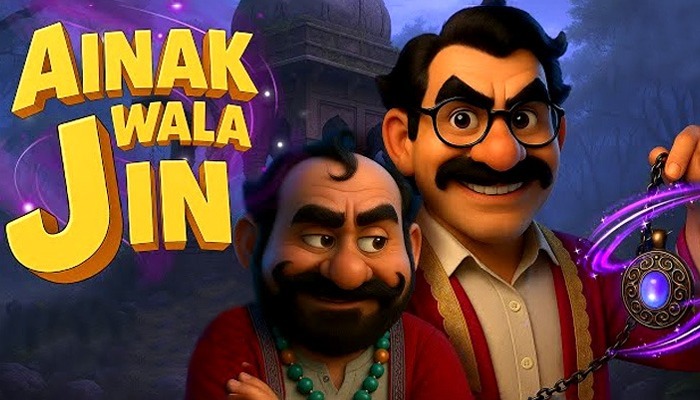On Fat Tuesday, revellers dressed in traditional purple, green, and gold came out to celebrate New Orleans’ first full-dress Mardi Gras since 2020. Back-to-back parades and marches through the French Quarter and beyond are part of the fun, with masks against COVID-19 required only in indoor public spaces.
Even with officers working 12-hour shifts on Mardi Gras and the days leading up to the end of the Carnival season, parade routes are shorter than usual because there aren’t enough police for the standard ones.
However, with COVID-19 hospitalizations and case numbers declining globally and 92 percent of the city’s adults at least partially vaccinated, parades and other festivities are returning after a season without them.
“I love Mardi Gras,” said Todd Hebert, who was dressed in a purple jacket with sequined lapels, a pale blue tutu with pink stripes, and a black hat with small horns on the top and a fringe of pink feathers as he rode the ferry across the Mississippi River on Tuesday to take part in the festivities.
“It’s the best time of the year. Last year was sad,” he said.
Costumed revellers gathered before dawn to watch the North Side Skull & Bone Gang, dressed as skeletons, awaken the city’s Treme neighbourhood and remind everyone of their mortality. From then on, it was “Let the good times roll,” with celebrations taking place in nearly every corner of the city, culminating in a ceremonial clearing of Bourbon Street at midnight.
Crowds waited in blankets along Jackson Avenue in the city’s Central City neighbourhood for the Zulu Social Aid and Pleasure Club’s parade, which began decades ago as a mockery of white festivities, with Black float riders dressed in blackface and grass skirts. People wore sequined jackets, children played football with throws caught in previous parades, and speakers on the back of a truck blared “Mardi Gras Mambo.”
“To me, this is Christmas. “I’d rather miss Christmas than Mardi Gras,” said Bo Ski Love, who was waiting for the parade with his son. He described last year as “disappointing.” He still cooked a turkey at home and drove around to see how other people decorated their homes.
“It’s the biggest party in the world,” he said.
Nikia Dillard was putting on gold, purple, and green false eyelashes and taking photos with the group of girlfriends and family she has gathered with for years to watch Zulu in the same spot. After spending last year’s holiday season at home and “in spirit,” “It felt good to be back to a more normal routine.
“It’s a wonderful sensation.” We’ve been cooped up, quarantined, and trying to be responsible for so long, and we’re still trying “She added that her group has been vaccinated, received booster shots, and is equipped with masks.
Mobile, Alabama, which bills itself as the birthplace of Mardi Gras, also missed out on a full-fledged Carnival last year due to COVID-19, and some restaurant managers say they are still having difficulty filling jobs, leading to the unusual sight of empty tables while people line up out the door in some places. But music was already blasting downtown hours before the first Fat Tuesday parade, as families staked out spots behind police barricades on Government Street, the city’s main thoroughfare.
The return of Carnival season has been a much-needed boost for business in New Orleans, where the city’s famous restaurants and music venues have been restricted or closed for months.
Superior Seafood & Oyster Bar, a 10-year-old restaurant located at the start of the shortened parade route, could set a Mardi Gras record on Tuesday.
“It feels that way. During the noon rush, general manager John Michael Rowland said, “With the weather and the general sense of a somewhat normal New Orleans.” “Mardi Gras is a symbol of who we are and how we welcome everyone.”
Hotel occupancy, on the other hand, is expected to be around 66 percent, down about 19.5 percent from 2020, according to Kelly Schultz, a spokesperson for New Orleans & Co., the city’s official sales and marketing organisation.
Last year, parades were cancelled because officials realised that the city’s tightly packed crowds in 2020 had created a superspreader event, making it an early Southern hot spot for COVID-19. Instead, to keep the Carnival spirit alive, people decorated their homes to look like floats.
The elaborate and fantastical floats of Rex, the self-styled king of Carnival, chosen by a group of high society, old-money businessmen, follow Zulu. In other parts of town, the Mardi Gras Indian tribes will parade after months of hard work on their intricately beaded costumes. In addition, members of smaller marching groups dressed in elaborate costumes take over the French Quarter.
Max Materne and his wife were dressed as mushrooms and strolling through the French Quarter with their two children — jokingly referred to as the spores — towed in a waggon. Materne, who is from New Orleans, said the day marked the end of a wonderful Carnival season for him and his family.
“I wish Carnival was everywhere because it would be really nice for the entire world to feel this right now,” he said.





















